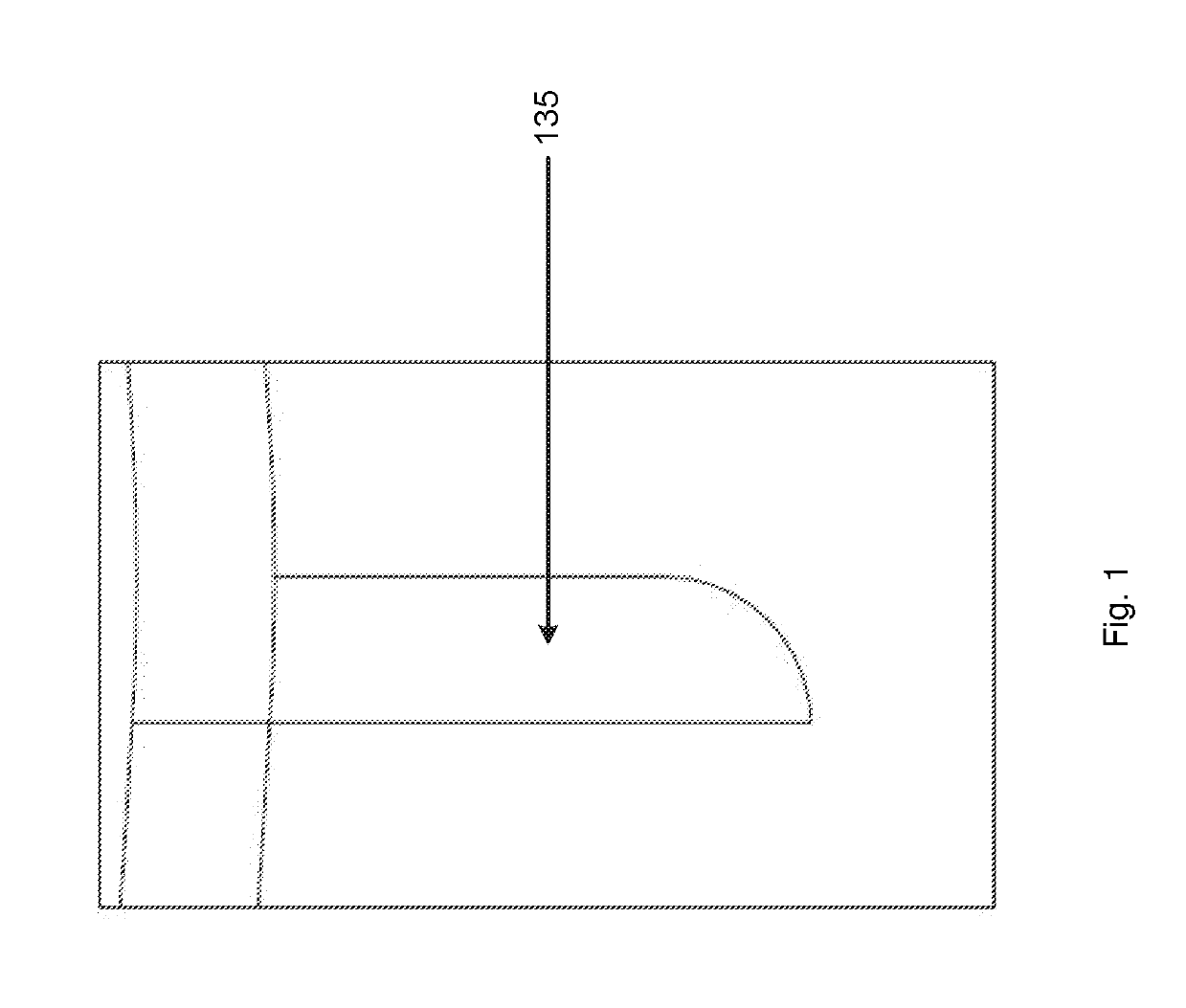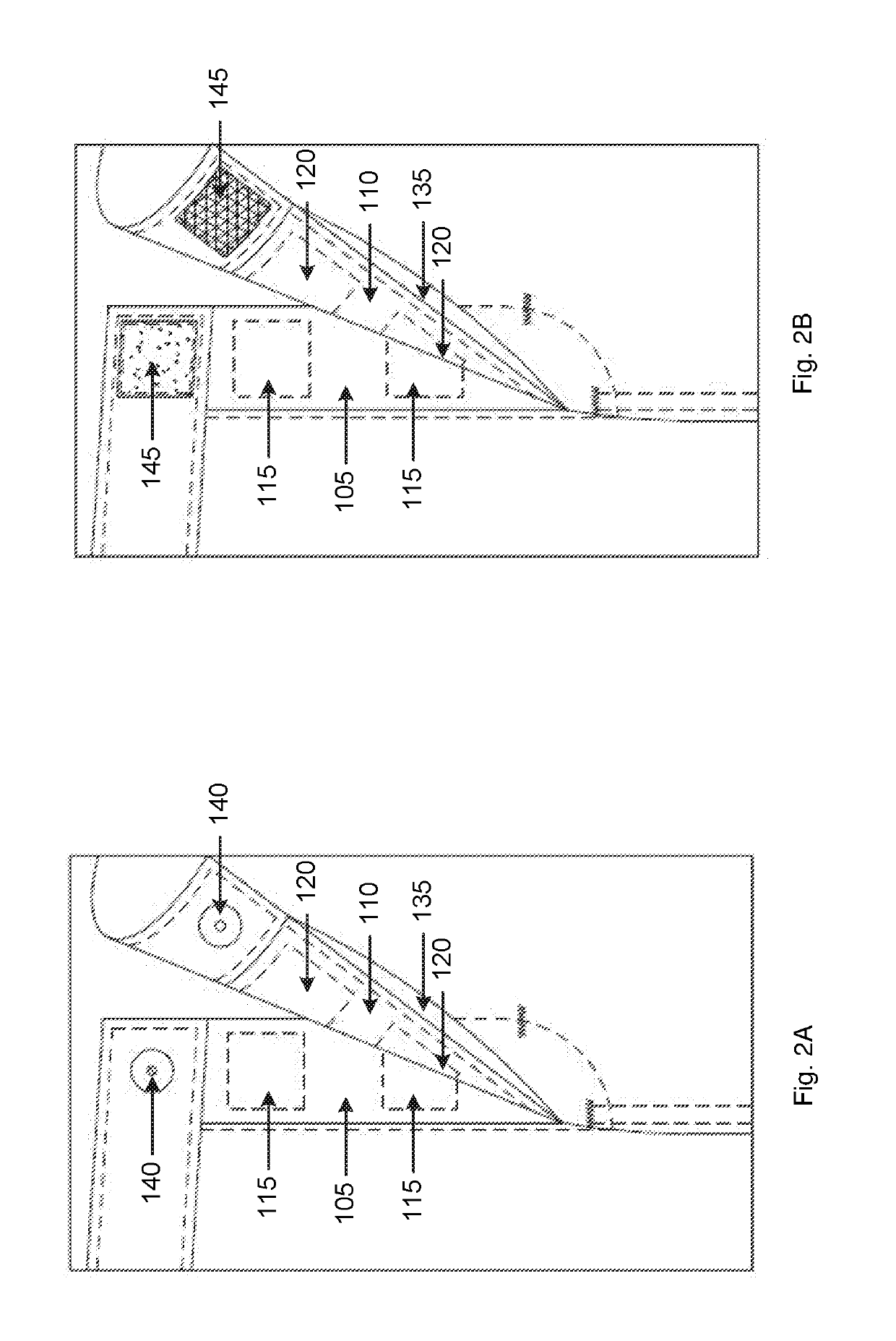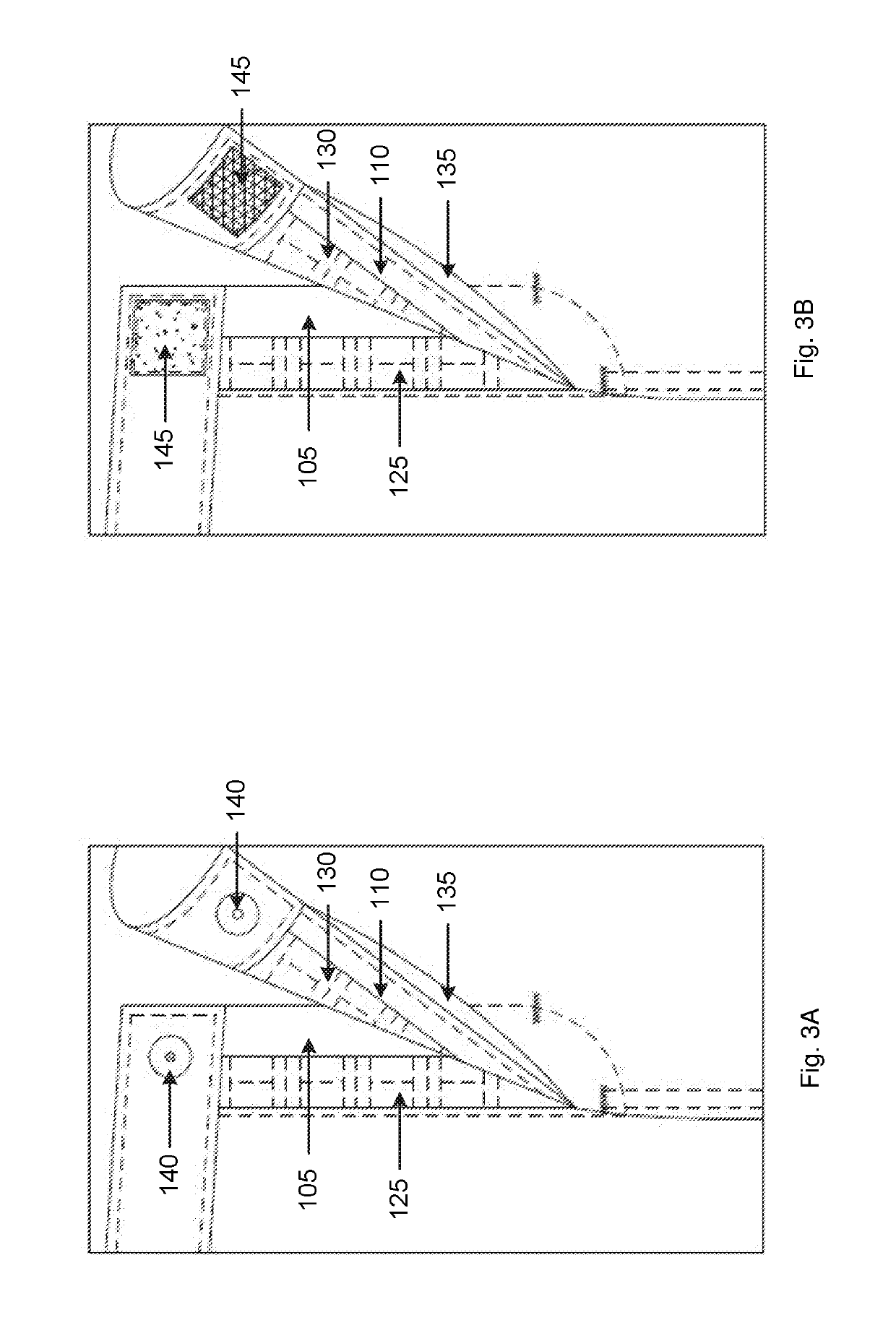Discrete fly for adaptive clothing
- Summary
- Abstract
- Description
- Claims
- Application Information
AI Technical Summary
Benefits of technology
Problems solved by technology
Method used
Image
Examples
Embodiment Construction
[0021]FIGS. 2A, 2B, 3A and 3B depict the fly of the present invention in the open position. As used herein, the “open position” denotes that the two panels of fabric, which are part of the cut opening in the garment, are not fastened together. This fly has a first panel (105) which has a first alternative closure and a second panel (110) which has a second alternative closure. Each of the first and the second panels may be about 2 inches to about 8 inches in length, preferably about 3 inches to about 5 inches in length.
[0022]As explained in more detail below, one type of alternative closure is formed with one or more pairs of magnetic fasteners, one of the pair having a positive polarity on the connecting side (“a positive magnetic fastener”) and the other of the pair having a negative polarity on the connecting side (“a negative magnetic fastener”). Each magnetic fastener is typically encapsulated in a plastic, rubberized or waterproofed-cloth pouch, which is sewn in, glued to or o...
PUM
 Login to view more
Login to view more Abstract
Description
Claims
Application Information
 Login to view more
Login to view more - R&D Engineer
- R&D Manager
- IP Professional
- Industry Leading Data Capabilities
- Powerful AI technology
- Patent DNA Extraction
Browse by: Latest US Patents, China's latest patents, Technical Efficacy Thesaurus, Application Domain, Technology Topic.
© 2024 PatSnap. All rights reserved.Legal|Privacy policy|Modern Slavery Act Transparency Statement|Sitemap



